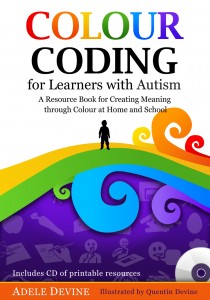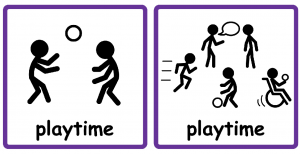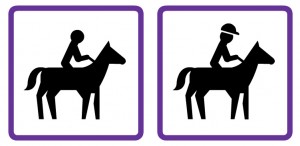 Adele Devine, author of Colour Coding for Learners with Autism advocates for the use of visual learning resources for pupils with autism spectrum disorders. In this article, Adele explains the importance of using accurate visuals.
Adele Devine, author of Colour Coding for Learners with Autism advocates for the use of visual learning resources for pupils with autism spectrum disorders. In this article, Adele explains the importance of using accurate visuals.
Statements, schedules, diagnosis, medical breakthroughs, meltdowns…We sift through so much information, searching for strategies that might help.
We know that presenting information in a visual way can often reduce anxiety, allowing a child with autism time to process expectations.
But if those visuals do not communicate the intended meaning, when looked at through literal eyes they could do more harm than good.
Here are some examples:
Play time
I once knew a child who always wanted to throw a ball over the fence at playtime. Was this ‘behaviour’ the result of a literal reading of a misleading symbol?
I’ve also known children, who have wanted to strip off at playtime. The symbol still used in many settings for ‘playtime’ shows two peg people. One peg person wears only blue pants and the other a pink triangle – boy pants and girl pants?
We cannot make assumptions about how children see and perceive information. They might not process our language or read the words. The picture we present is the only clue.
Riding
What about the child who gets to horse riding and refuses to wear a helmet? Have they spent the entire journey processing a symbol showing them on a horse without a helmet? This make the helmet seem wrong. If we expect them to wear a helmet to ride a horse our symbol should show this.
Lunch time
Does the lunchtime symbol show lunch or does it show a plate of sausages? If you were sat in a restaurant and handed a picture of a plate of sausages or a sandwich instead of a menu what would you expect to eat.
People with autism can be very literal and it is important that we pay attention to details when supporting them. Our symbol should either show exactly what they will be eating or a variety of food options.
Take a fresh, literal look at the visuals and the wrong ones will begin to jump out.
Colour Coding for Learners with Autism by Adele Devine and illustrated by Quentin Devine was published in 2014 by Jessica Kingsley Publishers.


